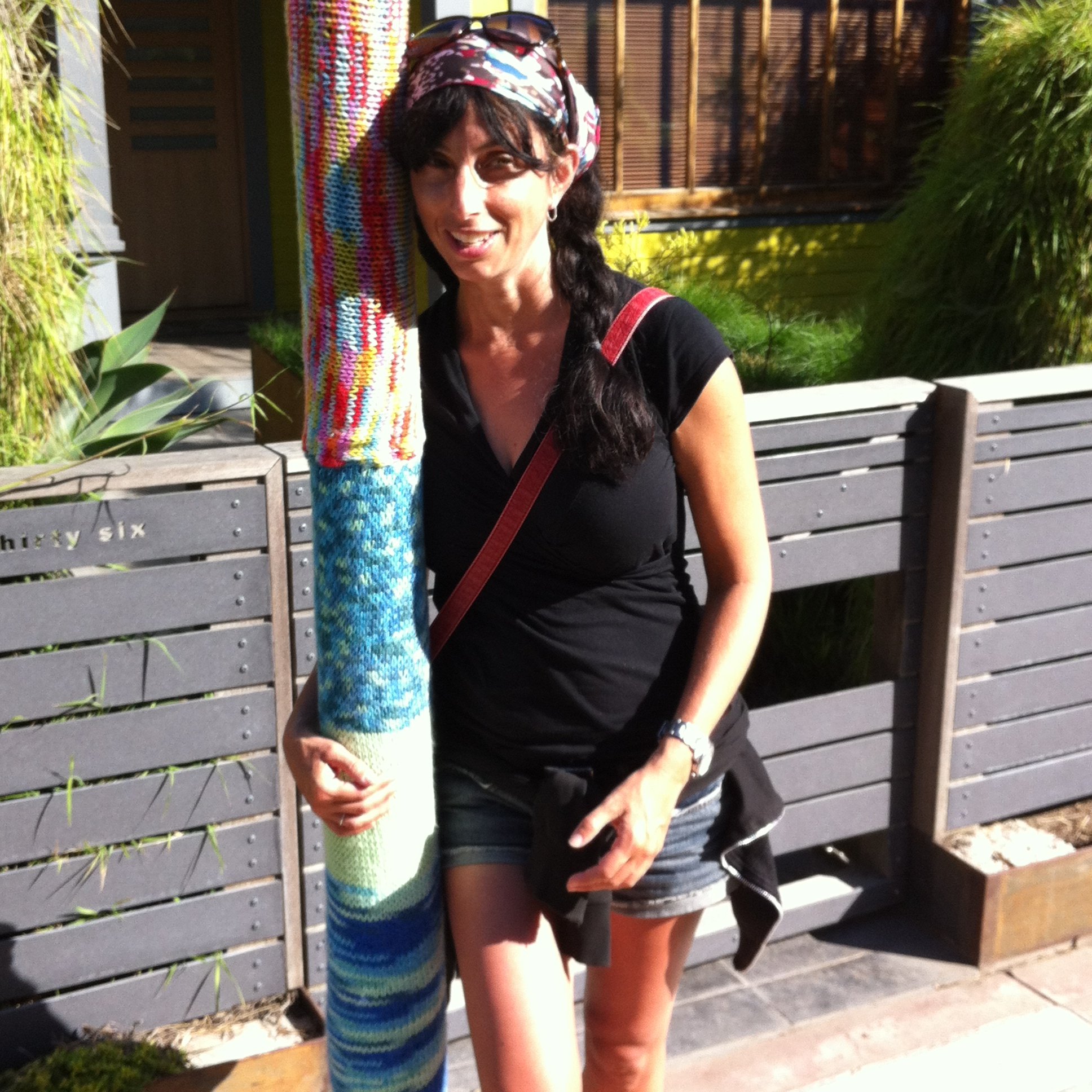Love Is the Size of an Olive
When you lose a pregnancy to miscarriage, you never get to speak about your love for the child you lost.
I finally got pregnant after four rounds of insemination, three rounds of egg retrieval, and three rounds of embryo transfer. Some people who do IVF take pictures of all the needles it took to get them to baby. I didn’t. I wanted to forget. And when I saw the results of my six-week blood test, I did. I forgot everything: the years of yearning and disappointment, the needles I injected into my belly, wherever I happened to be at the required time – in the bathroom of a Greyhound bus, in a basement hallway of a local theatre during the intermission of a play – and I let the totality of my happiness sweep over me like a salty, cleansing wave. In an instant, I was besotted, intoxicated. Up until that moment, I felt as though I’d been defined by a conspicuous, ever-present absence, but suddenly I felt complete – full of such enormous feelings for the smallest thing I’d ever created.
I had been trying to get pregnant for about six years when it happened. Six years is the time it took me to write a novel, to commit to the love of my life, to make a short film. Most of us measure time by how it is filled. We look through the photo albums of our years and recall the richness of family reunions, long-planned holidays, and spontaneous moments of joy. For all the years I had been working on project make-a-baby, I measured time by what was missing and by the bodily invasion of ultrasounds and blood tests and the army of kind nurses who delivered to me bad news.
We grow up thinking babies are conceived in a blaze of love, their very origin a manifestation of desire. My embryos – there were ten – were made in a lab with a glass needle injecting sperm into egg, the cold precision of science their provenance. In a way, I felt for them; I hoped they’d know that even in the sterile environment in which they became a spark of life, they were deeply wanted. Flesh of my flesh, bone of my bone. One by one, or two by two, my doctor implanted them inside my estrogen-primed uterus, and each time for two weeks, I’d hum to them or talk to them, willing them to stay, to live to become more than an idea or a hunger, but a full-fledged cacophony, the miracle of breath, an infant.
With IVF, when your frozen embryo is transferred, your doctor tells you that because the embryo is conceived – a being already – you are the equivalent of four weeks pregnant. Yet, embryo after embryo passed through me without even the dignity of being able to call it a miscarriage. There isn’t a word for the loss of an embryo that doesn’t stick.
The desire to make a baby, especially through such an invasive and frequently heartbreaking procedure, is a tough one to figure out: babies are demanding, consuming, a full-time clamor. Even from a safe distance I can see how motherhood carves whole chunks out of a woman’s identity and time. And yet my own longing for a child is something that rises up in the marrow, howls its purpose, pulsates. I think of having a child as planting a seed in order to grow a tree, so that a tiny plot of earth becomes your forest home. I think of shared roots and of the comfort in the idea that someday, when the parent tree dies, its body will nurture the soil from which the next generations will sprout. Without children – for those of us who want them – there is something about the idea of our own mortality that is so very terminal.
Death is the thing no one speaks about when you decide to use a fertility clinic. Their brochures are filled with photos of plump babies, brimming with optimism and hope. Just looking at the pictures of pregnant women makes you imagine yourself swollen with life and possibility. Years ago, an acquaintance who was also using a fertility clinic showed me an app that told me that at conception, an embryo is the size of a poppy seed. At six weeks gestation she is a raspberry. Every week you could fall for another luscious metaphor for new life. And yet, when you do IVF, every stage rides a knife’s edge between viability and termination, success and failure. Every failed attempt is a small, silent death, and each one is a reminder: you will die someday, and even your genes will not be left behind.
Before the embryo that stayed awhile was transferred, the lab technician showed me a photo of it. I caught my breath at its symmetrical cell structure. Perfect as a tightly closed rosebud, or a still-unwound frond. What secrets did this being hold? Blue eyes like my husband’s? Or green like mine? Was my husband’s athleticism and musicality written somewhere on her primordial genes? Would she have a facility with language like me? I would speak to her in French, sing to her my mother’s Yiddish lullabies. The picture showed me a bundle of cells. As though it were tea leaves, I read into it a detailed future.
I’m not one to believe in omens, but if I did, I’d say maybe the signs were bad from the start. The day of my embryo transfer, I taught a night class – fiction writing – and my husband came to pick me up. In the dark of the nearly-abandoned parking lot of the college, we saw it: a coyote. I’d always wanted to catch sight of the rumoured urban coyotes and there it was, staring at us with its yellow eyes, entirely disinterested, completely still. The enchantment that wildlife casts came over me in a shiver. Life. Maybe I should have known better. Our coyote looked mangy and dishevelled, as though plagued with ill health, a shadow of doubt.
Another bad omen: a week after the embryo transfer, our cat died suddenly. I’d taken her in from the alley out back where she’d been abandoned, winning her over with Fancy Feast until she came running when I called. She was an entirely black, skittish, five-pound fuzz face of pure love. Everything scared her. But if you lay quietly in bed, she’d hurl herself onto your chest with the vigour of someone starved for affection. She was a champion purrer. When my husband moved in, the way she burrowed into his armpit made my heart burst. I wanted her to live to be old and full and contented. She deserved it. But she died that week, suddenly and cruelly and instead of humming to my embryo, I sobbed. My embryo, I thought, was experiencing its first loss too young.
I passed the days after our cat died and before I found out that the transferred embryo had stuck and begun to grow worrying that the grief in my heart would seep into my child’s blood[JN3] . Who would want to stick around with a mother who cries all the time? Such is the level of volition I imagined my embryo to have. On the assigned day – a clear, warm October day punctuated by the bright yellow leaves of the gingko tree, I went for the first blood test, waited for the lab results to appear online, woke my husband up from a nap, and like millions of women everywhere, I said those words that blew both our minds, “I’m pregnant.” When the fertility clinic called, they congratulated me, and I thought about how we congratulate women for getting pregnant as though it is an achievement like getting a university degree or publishing a book, when for most women it is much more about luck than labour. Yet those of us who do IVF know how infinitesimal the chances, and how harsh the labour. The fact that some women get pregnant without trying, or try once or twice and get a baby out of it is far out of my range of comprehension, a language I will never speak.
The nausea of pregnancy came almost right way, and I relished the feeling, held it to me like a comforting blanket. I could feel the swollen tenderness of pregnancy take hold – this baby meant business. I told myself I could still miscarry, the odds of that were good, but beneath that a stronger current of feeling: the queasiness, the insistent fluttering in my stomach told me this was the one.
When my baby was the size of a sweet pea, my ultrasound showed a tiny being, but when my baby was the size of a raspberry, there was no heartbeat. When my baby should have been the size of an olive, almost a kumquat, she left me. Two years later, I still feel the shape of her absence in me.
She was the fifth of ten embryos. I know no word to describe the place exactly halfway between hope and despair or to describe the grief we feel over an invisible loss. Michael Ondaatje writes in his poem “The Cinnamon Peeler” of the emptiness of being wounded “without the pleasure of a scar.” Miscarriage is the emptiness of mourning the child you never got to meet, without the rituals of grief or the comfort of acknowledgement. There is nothing lonelier than losing someone nobody else got to love.
The loss of a pregnancy derails not only the present but the future. Though I never got to hold my baby, her absence haunts the years to come. I will never see her blue or green eyes. I will never teach her French or read her my favorite childhood books. I will never hear her voice. I won’t get to see her legs grow long or know her talents and quirks. Her loss travels with me when I imagine myself old, a lifetime without her.
It is now two years and four more failed embryo transfers later and the silence of grief still stalks me, but I hope that little embryo, the one who fought to stay, knew that I loved her. I still do. She is the greenest olive. The smoothest kumquat. She is the loveliest story I never got to write.
-Jill Goldberg
Jill teaches literature and creative writing at Langara College in Vancouver, BC. She has presented at conferences including at AWP and she is the past chair of Canadian Creative Writers and Writing Programs. As research for her novel, Jill learned to fire a chrome-plated Smith and Wesson .38 caliber pistol. Though she found it terrifying, she is, apparently, a good shot.















